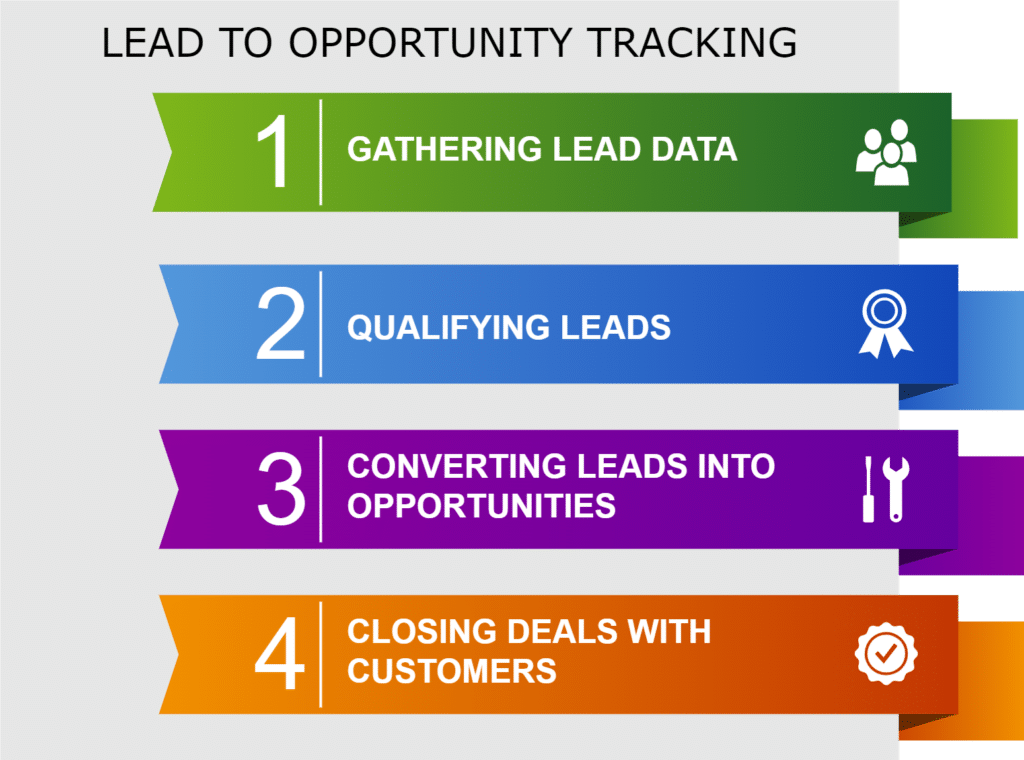Streamlining Lead Conversion in Salesforce Workflows
Lead conversion in Salesforce consists of tasks and processes to turn qualified leads into accounts, contacts, and opportunities.
But, what is a lead? A lead is a person or a company that shows interest in your business products or services. Sales agents often engage with leads to try convert them into customers. The tasks and processes that make up the lead conversion process can be long and complicated, but it is crucial to have them set up in your sales team. It will allow sales agents to effectively monitor and identify leads as they travel through a sales funnel.
Join us in the article below as we uncover how to speed up converting leads using workflows that integrate with Salesforce.
Lead Conversion Process in Salesforce
Businesses connect their lead conversion workflows to Salesforce so they can save all their data in a single location. Then, teams can connect to Salesforce and access the stored lead data at any time.
Additionally, a Salesforce lead conversion process lets sales agents view a lead’s entire sales journey on one platform, which helps to speed up sales tasks and make teams more productive at work.
Let’s take a look at some tasks found in a Salesforce workflow that could help you convert leads into customers faster.
Salesforce Lead Qualification
This is the first step in a lead conversion process. To qualify a Salesforce lead, you need to begin by creating the lead. Sales qualified leads can be manually entered into Salesforce, imported, or captured via lead gen forms.
Once lead data is in Salesforce, agents can follow through on sales tasks like:
It’s great to have a sales lead qualification process in Salesforce because the CRM giant has tools to monitor common tasks like following lead activity, taking notes, and facilitating communication with leads.
Salesforce Lead Conversion
The next step in this sales process consists of two phases: preparing for lead conversion and actually converting the lead.
When preparing a lead for conversion, a sales agent begins by determining the quality of the lead. A qualified lead is a person who has been identified as someone who has a high chance of purchasing your business products or services. Leads with a high potential to be converted can be assessed according to their finances, needs, and timelines for products and services.
This phase also requires that the sales agent add all the details of a lead to their profile. This information can include:
The second phase is to notify Salesforce that you are converting the lead. To do this, click the Convert button on your lead record page. Now, Salesforce will map your lead fields to the fields in the following records:
This is known as lead conversion mapping in Salesforce.
Salesforce Lead Conversion Mapping
If you wish to customize your mapping, go to your lead conversion settings in Salesforce and check that your information has shifted.
Another useful tip is to use lead conversion reports in Salesforce. These tools monitor and analyze your lead conversion process. The insights gained from the reports will teach you how effective your marketing and sales strategies are. You can then use the information to improve your lead conversion strategies.

How to Convert Leads Effectively with Salesforce Automation Tools?
Ever wondered how you can take your lead conversion tasks to the next level with Salesforce? It’s time to start using those automation tools. They are designed to improve and smoothen your entire lead conversion process.
Salesforce automation tools are popular because they automate workflows. For example, they can be used to automatically manage:
Let’s now take a look at a few Salesforce automation tools that remove manual tasks from processes and empower teams to spend their time on high-tier activities, like networking with potential and actual customers.
Salesforce Web-To-Lead Forms
When you automate lead data collection into your CRM platform, you can use Salesforce Web-to-Lead forms. These forms can be designed and placed on your website to automatically capture lead data to Salesforce.
If you are looking for an alternative solution for Web-to-Lead in Salesforce, you could connect a third-party app to your system. You would want one that seamlessly integrates with Salesforce, like Titan, LinkedIn, or Facebook.
The benefit of these forms, is that they eliminate manual data entry into Salesforce for sales agents. These professionals can now use their time on other sales tasks like prospecting leads on social media platforms. Meanwhile, your lead data is instantly captured accurately and pushed directly to Salesforce.
Salesforce Forms for Generating Leads
Sales agents spend a lot of time generating leads. Some of the activities that they have to engage in to generate leads include:
One way to streamline some of these sales activities is to implement Salesforce forms for lead generation. For example, they can be placed on websites to collect and push lead data to Salesforce. One of the benefits of using Salesforce Forms is that they provide designers with fields that are customizable. This means that designers can add the following fields to forms which are essential for lead generation:
When you have the power to add any field you want to a form, your teams will be able to study valid lead data to correctly qualify leads. This will have a knock-on effect to the lead generation process, as sales agents can follow up with the leads that have a high chance of turning into customers.
Salesforce Survey for Lead Generation
The next lead generation tool we would like to discuss is Salesforce Survey. It’s a Salesforce feature used by marketing and sales professionals to design surveys that collect feedback from leads and customers.
Here are a few things you can achieve with Salesforce lead generation surveys:
Adding surveys to your lead generation processes is a must if you want improved profiles within Salesforce. These Salesforce tools give us the chance to collect more data from leads automatically. This helps to build fuller lead profiles that can be studied to understand an audience better, score leads more accurately, and segment markets.
Lead to Opportunity Tracking Process
Lead to opportunity tracking is an important process for sales teams and consists of many steps:

We already explained how to automatically add your lead data to Salesforce. Using forms or surveys can save time and keep your data accurate. When it comes to tracking your leads in Salesforce, sales teams need to ensure they actually move to opportunities for your business.
Convert Lead to Contact in Salesforce
Contacts in Salesforce are qualified opportunities. You want to convert leads to contacts in your sales process when you can be sure that they are ready to purchase your products or services. Determining whether a lead is ready for conversion will depend on if they have the budget to afford your products, and how much they need it in their lives. This information can be collected through the use of lead generation contact forms.
Once you are ready to update a lead’s data to contact in Salesforce, follow these 2 easy steps:
- Go to your lead data in Salesforce and click on the Convert button.
- Follow any other instructions that pop up in Salesforce.

Alternatively, if you want to create an opportunity in Salesforce, simply follow the below steps:
- Log into Salesforce with your username and password.
- Find the App Launcher on your Salesforce homepage and search for Opportunities.
- On the Opportunities tab, click on the New button to open the new opportunity creation form.
- Fill out the Salesforce opportunity creation form with your Opportunity Name, Account Name, Close Date, Stage, Type, Lead Source, Amount, Probability, and Description.
- Add specific products or services if you need them with the Add Product or Add Services buttons.
- Add your contacts that are related to the opportunity with the Add Contact button if you need to.
- Click the Save button to create the opportunity in Salesforce.
These are 7 very easy steps to help you create an opportunity in Salesforce. However, keep in mind that you might need additional steps if you have a specific Salesforce edition and customization.
Converting Leads with Titan for Powerful Results
If you have specific marketing, sales, or business goals for Salesforce you will need a platform that can give you custom processes. We highly recommend Titan for your lead conversion projects since we have a solution for any Salesforce use case AND we can achieve your goals with zero code.
Titan Forms
When it comes to collecting data, try our Titan Forms app. With it, designers can create custom forms using a drag-and-drop builder to speed up form creation. Titan also collects all your lead data and pushes it directly to Salesforce in real-time. However, we can also pull data from Salesforce into your forms.
Our advanced tools give you the option to use conditional logic without coding experience. Use these features to create streamlined forms that elevate lead experiences which results in higher response rates.
Titan Survey
You can also collect data using Titan Survey. Our app can take your Salesforce surveys to new heights. With Titan Survey, you can collect lead feedback to measure their interests or conduct market research initiatives. Titan also uses no code to build surveys that integrate directly into Salesforce. Here are a few benefits you get from using Titan Survey for converting leads:
Overall, whether you use Titan Form or Survey, our no-code salesforce automation tools speed up lead conversion tasks and processes to assist with identifying those high-quality leads that can be converted into opportunities.
Frequently Asked Questions
How do you maximize lead conversion?
You can increase your lead conversion rates via many marketing and sales strategies. Some of them include:
- Studying your target audience to learn how to attract your potential customers.
- Improve your marketing and sales processes with software automation tools.
- Show leads that your products and services have unequaled value.
What can improve your conversion rate of a digital lead?
You can use many strategies to make your conversion rates better.
One effective strategy is to take a look at your landing pages and see how they can be upgraded:
- You want your landing pages to be clear so they can communicate the value that your products or services provide.
- Also, use convincing call-to-actions that stand out, like asking a visitor to make a purchase or sign up for a newsletter.
What is the best way to manage leads in Salesforce?
There are many tips you can follow. One best practice is to create custom fields in your data-capturing tools, like forms or surveys. This step will make sure you collect accurate, relevant, and trustworthy data from leads.
Get Zero-Code Solutions for Lead Management in Salesforce
Thanks for reading our article on how to speed up your lead conversion tasks and processes in Salesforce. We hope we have given you new ideas of how to create more time to engage with people while Salesforce tools and features assist with manual administrative tasks like data capturing.
If you need a more custom solution, we suggest you check out our Titan platform. We have apps that allow you to streamline lead conversion using no code.
For more information, reach out to us on one of our social media channels below.
We hope to see you soon!

Disclaimer: The comparisons listed in this article are based on information provided by the companies online and online reviews from users. If you found a mistake, please contact us.

